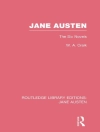Draws on Old Norse literary heritage to explore questions of emotion as both a literary motif and as a social phenomenon.
Authors throughout history have relied on the emotional make-up of their readers and audiences to make sense of the behaviours and actions of fictive characters. But how can a narrative voice contained in a text evoke feelings that are ultimately never real or actual, but a figment of a text, a fictive reality created out of words? How does one reconcile interiority – a presumed modern conceptualisation – with medieval emotionality?
The volume seeksto address these questions. It positions itself within the larger context of the history of emotion, offering a novel approach to the study of literary representations of emotionality and its staging through voice, performativityand narrative manipulation, probing how emotions are encoded in texts. The author argues that the deceptively laconic portrayal of emotion in the Icelandic sagas and other literature reveals an ‘emotive script’ that favours reticence over expressivity and exposes a narrative convention of emotional subterfuge through narrative silences and the masking of emotion. Focusing on the ambivalent borders between prose and poetic language, she suggests that poeticvocalisation may provide a literary space within which emotive interiority can be expressed. The volume considers a wide range of Old Norse materials – from translated romances through Eddic poetry and
Íslendingasögur (sagas of Icelanders) to indigenous romance.
Sif Rikhardsdottir is Professor of Comparative Literature at the University of Iceland and Vice-Chair of the Institute of Research in Literature and Visual Arts.
Cuprins
Introduction
Literary Identities and Emotive Scripts
Emotive Subjectivity
Voice and Vocalisation
Public Masking and Emotive Interiority
Modulating Emotion
Conclusion
Despre autor
Sif Rikhardsdottir is Professor and Chair of Comparative Literature at the University of Iceland.












